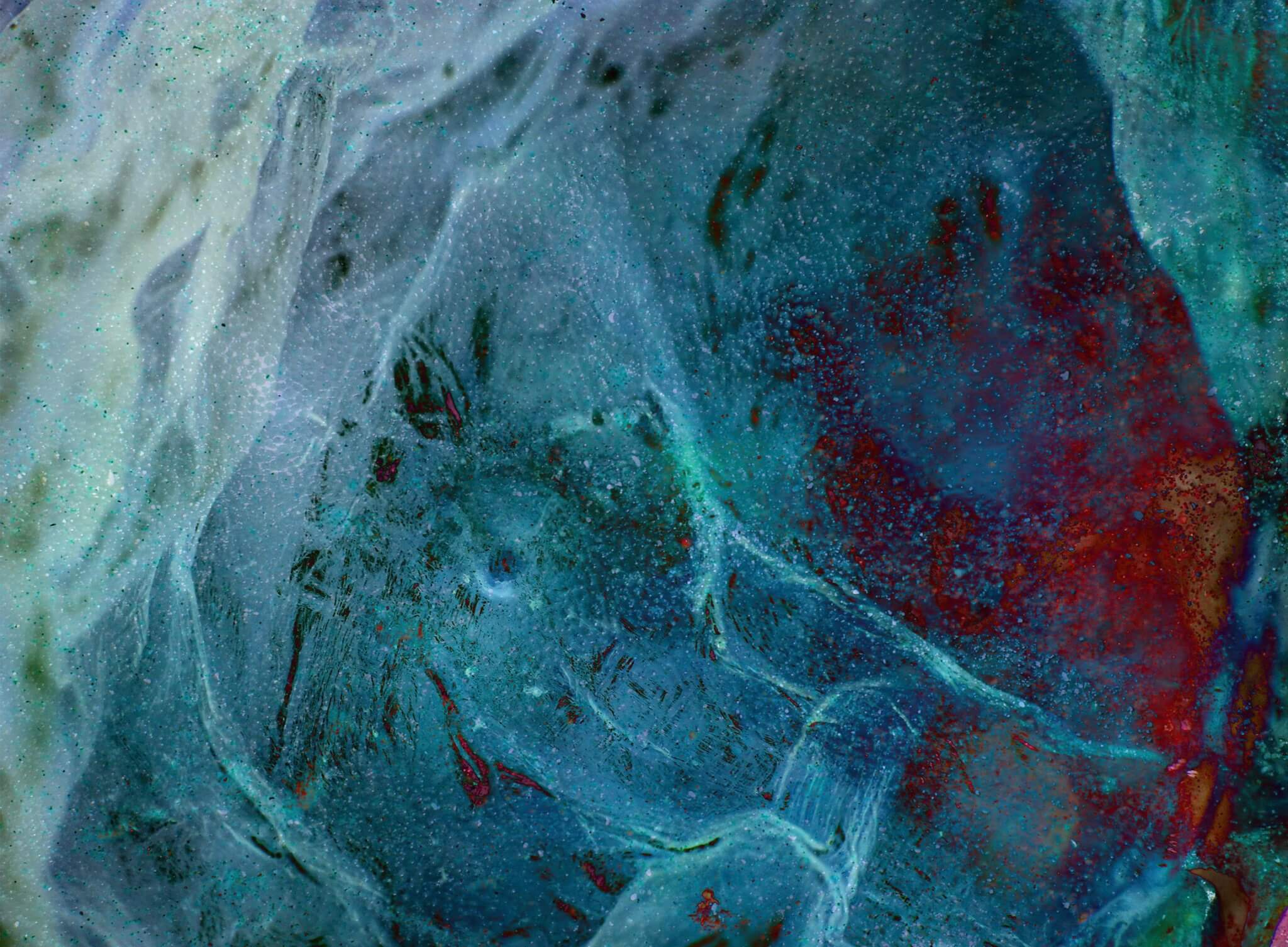Degrees of Life - exhibition visit

The exhibition can be visited between 23.2. - 11.3.2022 at University of Applied Arts - Zentrum Fokus Forschung, Rustenschacherallee 2-4, 1020 Vienna. Visits by appointment - see QR code >
The FWF research project Co-Corporeality locates itself at an interface between architecture, art and science. The research focuses on communication with our microbial environment. The title, Co-Corporeality, refers to the union of two bodies, their symbiosis and simultaneous existence, which applies equally to our microbiome and our environment. Co-Corporeality asks how a person perceives their environment and inner world, which is strongly made and controlled by microbes, by engaging individuals in unfamiliar communication with bacteria. >>> more context
The exhibition is structured around three different self-sustaining environments hosting three types of bacteria: Cyanobacteria, Escherichia coli, and Sucrofermentas bacteria. The three enclosed environments, entitled CyA, SuCr, ECo, refer direct- ly to the names of the microorganisms/bacteria living in them. All settings provide the necessary environmental conditions for the bacteria to survive, but they rely on human interaction to thrive.
The environment Eco hosts the Escherichia coli bacteria. Human interaction allows the bacteria to grow through the addition of nutrients. This growth can be visualised through different co- lour spectrums through the addition of chemicals.
The SuCr environment, inhabited by the Sucrofementas bacteria strain, supports the growth of cellulosic bacteria and supports survival outside ist nutritional liquid. Human interaction can direct the location of growth via a moving spraying nozzle.
Human interaction is supported by an eye-tracking device that registers the local position and rotation of the moving pupil, situating the human eye within the surrounding physical space (in this case the exhibition). The eye-tracking is used to activate specific machine parameters in order to visualise, stimulate, or direct bacterial growth and behaviour. Conscious human actions such as gaze direction and dura- tion and unconscious human data such as pupil diameter are processed before activating the machines within ‘Degrees of Life’.
The self-sustaining environments are accompanied by a series of artefacts from past human-bacterial worlds and a visual interface displaying the perspective variables associated with the visitor's gaze detection. Artefacts act as the narrator of the exhibition as they guide the visitor through a series of communicative actions. 'Degrees of Life' creates a context where physical presence continually relates to new observation modalities and integration within embodied forms of computation.
Participants:
University of Applied Arts & IoA & Zentrum Fokus Forschung
Tiziano Derme (Co-PI)
Daniela Mitterberger (Co-PI)
Damjan Minovski
Barbara Imhof (Co-PI)
Nathaniel Loretz
Xavier Madden
Jennifer Cunningham
Patricia Tibu
Kyle Koops
Martin Eichler
Austrian Research Institute for Artificial Intelligence
Martin Gasser
Robert Trappl
University of Vienna
Institute of Materials Chemistry, Polymer & Composites Engineering
Alexander Bismarck
Neptun Yousefi
Kathrin Weiland
Anne Zhao
University of Vienna
Department of Microbiology and Ecosystem Science, Centre for Microbiology and Environmental System Science
David Berry
Andi Heberlein
University of Innsbruck
Institute of Microbiology
Heribert Insam
Judith Ascher-Jenull
Carolin Gamirsi
